Oppie—“A very mysterious and delphic character.” Interview with Kai Bird, co-author of American Prometheus
By Dan Drollette Jr | July 17, 2023
Oppie—“A very mysterious and delphic character.” Interview with Kai Bird, co-author of American Prometheus
By Dan Drollette Jr | July 17, 2023
Kai Bird is one of the co-authors of American Prometheus: The Triumph and Tragedy of J. Robert Oppenheimer, which won the Pulitzer Prize for Biography in 2005 and later became the basis for the newly released major Hollywood movie “Oppenheimer.”
By all accounts, Oppenheimer was a complex figure; over the years, commentators have used words as disparate as “complex, contradictory,” “ambitious,” “charismatic,” “mystical,” and “flawed” to describe him. About the only thing pundits seem to agree on is that Oppenheimer was brilliant.
Bird gives his take on the man in this interview with the Bulletin’s Dan Drollette Jr and describes what he and his co-author, Martin Sherwin, discovered in their journey to make their 721-page biography. Bird delves into Oppenheimer’s personality, his leadership as the head of the scientific end of the Manhattan Project, his climb to the heights of fame, and his fall from grace.
Bird also describes the recent—and, happily, successful effort—to restore Oppenheimer’s legacy to its rightful place in American society.
The executive director of the CUNY Graduate Center’s Leon Levy Center for Biography since 2017, Bird also explains why he once described biography as: “The hardest form of history—and the most expensive.”
(Editor’s note: This interview has been condensed and edited for brevity and clarity.)
Dan Drollette Jr: It must have been a bit intimidating to be made a co-author of this project rather late in the game. Hadn’t your co-author, Martin Sherwin, already spent 20 years researching J. Robert Oppenheimer by the time you got on board?
Kai Bird: Yes, but by then I was already very familiar with long-term biographical projects. I had already done a biography of John J. McCloy[1]—and one of McGeorge Bundy and his brother.[2] And I’d already gotten to know Marty Sherwin. Initially it was through The Nation, where I was an associate editor in the ‘80s, and he was writing a cover story.
Drollette: What was the story on?
Bird: Hiroshima, appropriately enough.[3]
But we really got to know each other later on, in the mid-90s, through our mutual involvement in the Smithsonian museum controversy over the Enola Gay. I was part of the advisory committee to it.
Drollette: Can you tell me a bit more?
Bird: Sure. The Smithsonian had wanted to put on a 10,000-square-foot exhibit at its Air and Space Museum to mark the 50th anniversary of the end of World War II. It was supposed to go into the highly nuanced and complicated issues surrounding the decision to drop the atomic bomb on Japan—you know, some generals, like Dwight D. Eisenhower, had criticized the use of the bomb as unnecessary, as the war was nearly won. And Truman’s chief of staff, Adm. [William] Leahy, had called it a “barbaric” weapon.
So the Smithsonian had wanted to put in all these points and counterpoints in the exhibit, but then the American Legionnaires and the Air Force Association cried foul. They wanted patriotically incorrect history and began demanding that they censor this and that. It became a big political controversy; Congress weighed in. It was a nasty fight.
To counter this, Marty and I formed a little committee of historians to defend the museum, and we wrote some op-eds together.[4]
We became good friends during that controversy; I found Marty to be a feisty, funny guy. That was in ’95, while I was still working on my Bundy biography.
By ’98, I had published it, and was searching for another project. That was when Marty came up with the idea that we should join forces on Oppenheimer.
Drollette: What did you say?
Bird: I told him no.
Drollette: Really? Why?
Bird: I told him that after the first biography I had undertaken with a co-author, we stopped being friends.
I told Marty that I liked him too much to do that.
But Marty was persistent. He kept coming down to have dinner with me and my wife, and talking it up—you know, stuff like, “It’s just such a great project.” And yes, he had done 20 years of research by then, but he kept telling me “Oh, Kai, you know, if you join me, there’s still enormous gaps in the research that you could fill; we don’t know enough about the 1930s.”
And he was very funny in his pitch. He said: “If you don’t join me on this project, my gravestone is going to say ‘He took the book with him.’ ”
So I was persuaded. (Laughs.)
Drollette: And how did it turn out?
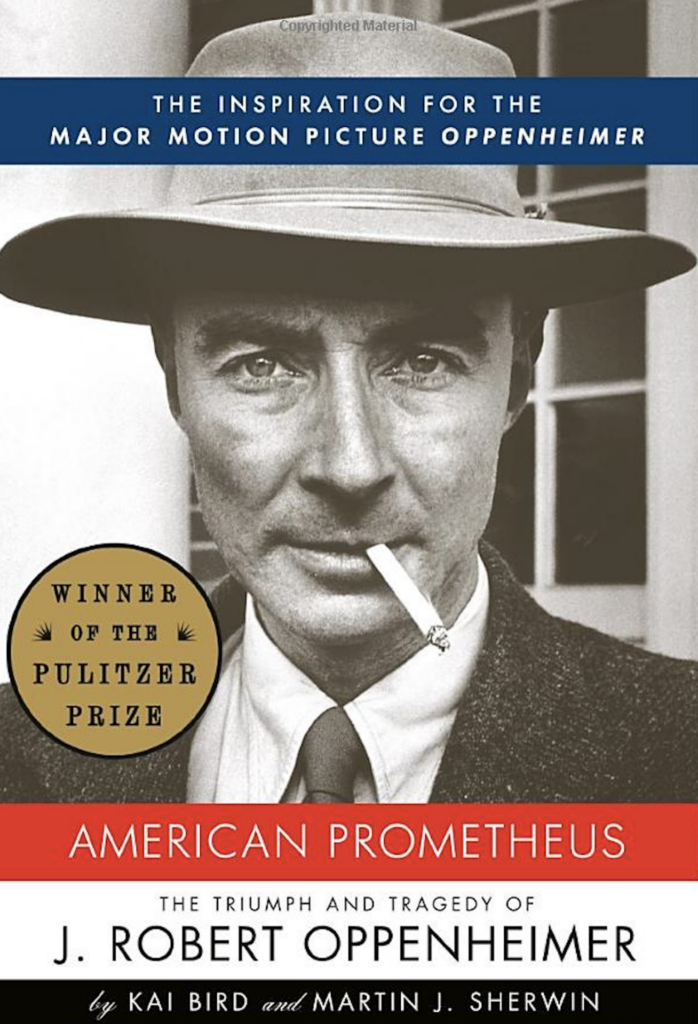
Bird: It was a great collaboration. Marty knew the material inside and out, so when we drafted chapters, he could see what was missing. He was a real wordsmith.
Just as important, Marty had done tons of research, and had acquired 50,000 pages of archival documents—including 8,000 pages of FBI documents obtained under FOIA [Freedom of Information Act].
Bottom line: It worked out well. I started to write chapters, and that stimulated him to write—and we went back and forth.
Though it still took another five years before the book came out.
Drollette: In a way, I guess you were lucky to have all these recordings from those wiretaps. If you wanted to know verbatim what Oppenheimer had to say back in 1941 about something, there it was, on these old FBI tapes.
Bird: Oh, there was some of that for the early years. Although it wasn’t in the form of FBI recordings you could listen to so much as 8,000 pages of records of meetings, interviews with people who knew him, and such.
But by the time the 1954 hearings came around, then you could read transcripts of the FBI microphones that were wiretapping Oppenheimer at the time.
So yes, there was an incredible wealth of material. Marty had done 100-plus interviews and had them all neatly transcribed by his graduate students—incidentally, you can hear many of them online at the Atomic Heritage Site.[5]
So it was a wonderful collaboration.
Drollette: Did you have any idea the book would do so well, critically and commercially? I don’t think many biographies are picked up by Hollywood.
Bird: Well, when the book came out in 2005, I thought it was terrific, and I was very proud of it. So was Marty. And I remember telling him about eight months after the book came out that I thought it was a candidate for the Pulitzer. And he said, “Oh, no, don’t say that, you’ll jinx it.”
And I can understand that, it’s such a subjective process.
But indeed, we won the Pulitzer.
However, even before that happened, there was a film interest. It didn’t happen, actually, until Christopher Nolan came along decades later. He was handed the book in the spring of ‘21, read it—and without even contacting us, he sat down and spent the summer writing a screenplay.
It was only in September of that year that Nolan contacted us to say that he had picked up the film option and was now dealing with Universal Studios
The tragedy was that we learned all of this in late September, and then two weeks later, Marty died of nonsmoker’s lung cancer.
Drollette: Well, at least he got to see this accolade…
Bird: Yes, he was around long enough to know that it was going to happen. But it’s still very sad. I wish he was here; Marty would have had a lot of fun, looking at the hoopla around Hollywood and the film release.
Drollette: One of the things that I liked about the book was how it captured some of the details of big science: the little pecking orders between the theoretical physicists and the experimental physicists and the engineers, the rivalries that go on. I mean, it’s a human endeavor, subject to the same kinds of things as any other group effort.
Bird: Oh yes, very much so.
Drollette: And I also picked up on some little things that you and Marty mentioned in passing in the book, such as how the physicists at the Manhattan Project “loved the verbal wrestling that’s inherent in the process of explanation.” That used to drive me up the wall when I was editing a magazine at CERN, where I was surrounded by physicists—because they’d want to pick things apart forever while I’m on deadline. But now I see it’s not just me, it’s part and parcel of the physicist psyche.
Bird: Yes, I think so.
Drollette: There was one other thing the book touched on: the connection between music and physics. I’ve noticed that almost every physicist I’ve run across has a passion for music; I don’t really know why that is. So it was something to find out that someone else had picked up on that as well—it wasn’t just a figment of my imagination.
Bird: I think that if you want to be a good physicist—particularly a quantum physicist in the 1920s and 30s—it helped if you were a polymath. It helped if you were curious and interested about music or poetry or literature, and Oppenheimer was all those things.
And Oppenheimer was particularly adept at being articulate; he could talk in plain English, and explain to a non-physicist what was going on.
That’s precisely why he was hired to be the director of Los Alamos by Gen. Leslie Groves, head of the Manhattan Project. Groves could see that Oppenheimer was not only a smart physicist but someone who could explain—in plain English—what was going on.
Drollette: Which is important if you’re asking for funding on the scale of billions of dollars.
Bird: Absolutely.
Drollette: And I suppose that’s a good skill set to have if you’re trying to corral all these brilliant people and get them going in the same direction—while dealing with sensitive egos.
Bird: Yes, that’s the other thing that happened when Groves was deciding whether to hire him: Oppenheimer came up with the notion that if you wanted to invent this “gadget,” then instead of isolating the scientists in different university labs all over the country, what you needed to do was put them all in one place and have them collaborate together.
And because you’re concerned about security and leaks, and it’s wartime, then it makes sense to put them on a high plateau, surrounded with a barbed-wire fence, where they can collaborate and talk freely among themselves inside—but kept isolated from the rest of the world.
That idea appealed to the general in Groves, very much.
And from reading the book, you know that Oppie knew exactly the place he wanted to do this. Because as he told his brother, his ambition in life was to combine his two passions: physics and life in New Mexico. And he did it, by creating Los Alamos, the secret city.
Drollette: I managed to interview one of the last surviving scientists from the Manhattan Project—a physicist named Roy Glauber—before he died, and he gave me some of his impressions. Glauber said that when you first met Oppie, you wouldn’t have thought he could inspire such loyalty. The way he put it was that Oppenheimer always liked to pepper everyday conversations with references to things like Indic poetry. But these were not affectations, Oppenheimer genuinely had an interest in that kind of thing; that’s just who he was. There were no pretensions or put-ons.
And the physicists kind of respected that, Glauber said, because Oppie was so true to himself. The attitude toward Oppie seemed to be something like: “Okay, he’s different. He’s odd. But he’s genuinely odd.”
Bird: Absolutely, I think that’s a good characterization. Oppenheimer was very eccentric. And yeah, he could quote the [Bhagavad] Gita—he’d taken the trouble to try to learn a little Sanskrit so he could read it in its original text.
He was a very mysterious and sort of delphic character.
But at Los Alamos, whenever they were grappling with some problem to produce the “gadget”—as the atomic bomb was known—often Oppenheimer’s style was to stand at the back of the room and just listen and let everyone argue: the chemists versus the engineers versus the physicists versus the explosion experts. And then after a long time, he would sort of intervene and summarize in a very quiet, soft voice what everyone was saying in a way that pointed the direction forward.
And the consensus then became: If we’re going to make any progress, then this is the next step forward; everyone had to admit that he was right. So he was quietly charismatic in this spooky way.
Drollette: Let’s talk about what happened after the book came out. I saw where you and your co-author helped contribute to the effort to rehabilitate Oppenheimer. Did you ever expect that there would be this nullification of the 1954 Atomic Energy Commission decision that stripped him of his security clearance? Were you optimistic from the get-go?
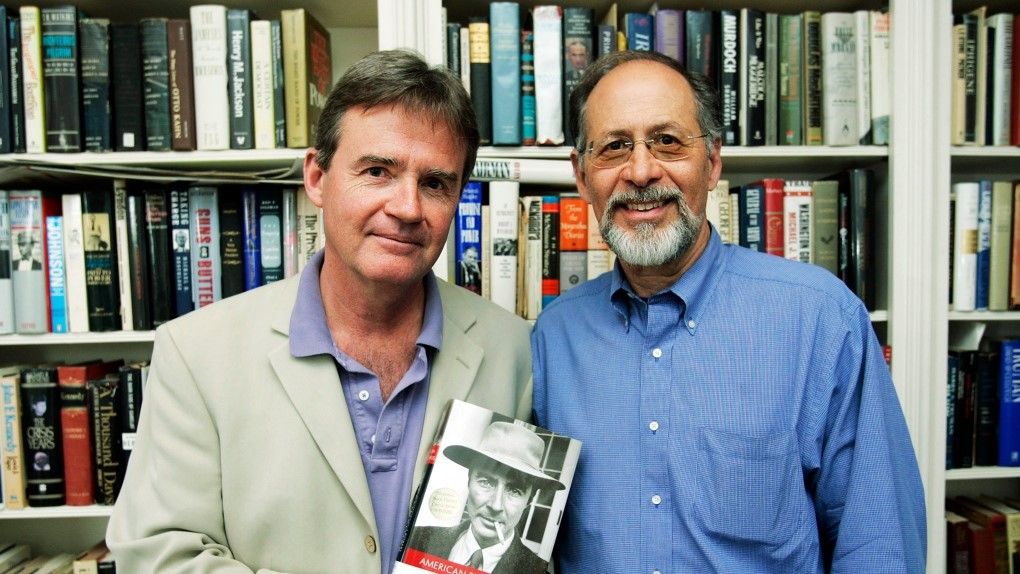
Bird: Well, no.
After American Prometheus won the Pulitzer, Marty happened to be living in Washington, D.C.—the same city I was living in—and we would socialize together. And one day we were talking about it when we said, you know, we ought to use this extraordinary platform we have now. We ought to write a letter to someone to try and persuade the powers-that-be to look at this 1954 hearing and see if there is anything that could be done to rectify the terrible thing that had been done to Oppenheimer.
Our first notion, oddly enough, was to go to a lawyer and see if there was a way that we could file a court case. We persuaded a prominent law firm in D.C. to assign a young associate to investigate this for a few months, pro bono. And funnily enough, after a couple of months, we got an apologetic phone call from this young associate who said, very sheepishly, that one of the senior partners in the law firm was C. Boyden Gray, the son of Gordon Gray, who had chaired the security panel that convicted Oppenheimer—and C. Boyden Gray didn’t want anything to be done that would damage the reputation of his father. Gray didn’t want anything that suggested that his father had made a mistake; he thought that would be a scurrilous charge.
So the law firm in question had to back out. Consequently, it was referred to another firm in D.C., and they eventually came back to us and said: “There is nothing to be done, from a legal point of view. The only recourse may be to appeal to the president or maybe the Secretary of Energy to issue an executive order.”
So we began to pursue that. And this took years.
We worked on it often, if fitfully, and wrote some long memos documenting all the egregious violations that the 1954 Atomic Energy Commission had done, violating their own rules on how to conduct a security hearing. Just outrageous things—like the fact that they used all those FBI documents in the hearing against Oppenheimer, but denied Oppenheimer’s lawyer any access to them, saying that they were still classified. When Oppenheimer’s lawyer tried to get the right kind of clearances so that he could read the evidence, they denied him a security classification.
Drollette: So it really was a kangaroo court.
Bird: Yes, that was pretty clear; everyone we talked to pretty much agreed.
But oddly enough, when we we appealed to the Secretary of Energy during the Obama Administration—Ernest Moniz, who was a physicist himself—and made these arguments, we didn’t get the response we expected. He was sympathetic, but he caved to the advice of his veteran lawyers in the Energy Department, who told him: “No, you can’t do this.”
Their thinking was that to exonerate Oppenheimer—or to nullify the decision from 1954—would send the wrong message and set up a double standard in the security system. They thought it would open up the department to lawsuits by people who have subsequently been dismissed for security violations, opening up a whole can of worms.
And in addition, in their view, Oppenheimer had lied. They and Ernest Moniz believed that Oppenheimer had lied in the security clearance hearings.
And of course, Oppenheimer had not told absolutely the whole truth in 1943 when confronted by a security officer about the so-called Chevalier incident.[6] He had, in fact, been telling the whole truth when questioned about it in 1954. But in ‘43, he had merely left out part of the story because he was trying to defend his friend Chevalier—who had naively passed on this feeler from a friend, George Eltenton, about whether information could be passed on to the Soviet consulate. And Oppenheimer’s immediate response had been: “No, that would be treason.”
Drollette: I would have thought that would be the end of it. I mean, you know, it was a feeler, and Oppenheimer said: “No.” End of story.
Bird: But the security people were concerned about the fact that Oppenheimer didn’t volunteer this information for three months. And then when he did volunteer it on his own—without any prompting—this worried the security officers, and they began questioning him. As in: “Well, how do you know this? Who told you this?”
And he then made up what he later called a cock-and-bull story, to try to say: “Well, you should investigate this guy, George Eltenton. But I can’t tell you the name of the person who approached me directly.”
Drollette: Not to mention that by that point, it was 1954, and they were asking him about events that had occurred nearly 20 years earlier—such as “How did you meet Jean Tatlock, who may have been a fellow traveler?”
Bird: Yeah, right, it was a lot of ancient history.
But that’s what made the Oppenheimer story so interesting.
You know, when Marty Sherwin persuaded me to join him on this project in the year 2000, at one point he commented that “You know, Kai, you and I wouldn’t be spending so many years on this man’s life if it was just a story about the father of the atomic bomb—if it was just about a physicist who invented weapons of mass destruction. What makes the story really interesting and gives it an arc in storytelling is the fact that in 1945 he was hailed as the most famous scientist in America. And then nine years later, he was publicly humiliated and stripped of his security clearance, with questions raised about his loyalty.”
Oppie became a non-entity after 1954, and his life as a public intellectual was pretty much destroyed.
And that is what makes his story interesting: There is a triumph, but also a tragedy.
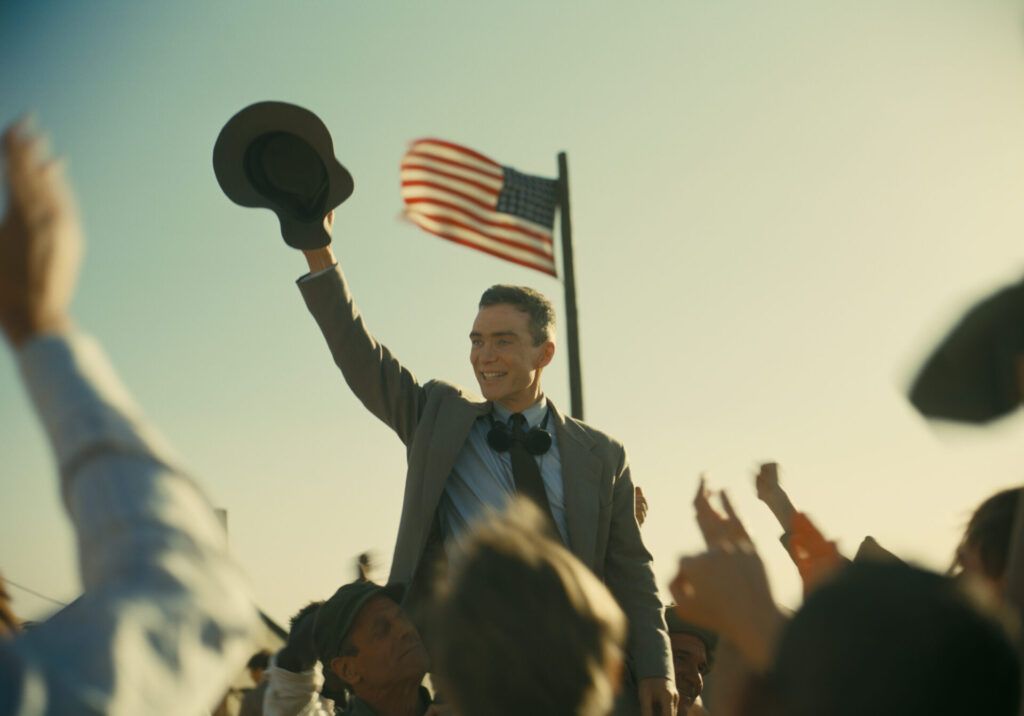
Drollette: I read somewhere—maybe in your book—that when Oppenheimer died in 1967, Senator Fulbright took to the Senate floor and said: “Let us remember, not only what his special genius did for us—let us remember what we did to him.”
Bird: Right. I love that quote, it really summarizes, in a dramatic way, the egregious nature of the harm that was done to this very sensitive soul.
Drollette: There was another line that said: “Vulnerability ran through his personality like a geological fault…”
Bird: He was a fragile personality, going back to his childhood and then his prolonged adolescence and his struggles in Cambridge, when he was first learning quantum physics in the 1920s. This is sort of what makes him so human—that he was aware of his own fragility, and he was aware of the fact that he was vulnerable.
And so that made him empathetic to other human beings. He could be very sweet and patient and nurturing to students and to the common citizen that he met in the street—and yet he could be extremely snide and insulting to people above him, in positions of authority.
Which I also find sort of endearing.
Drollette: I’ve got to say that the person who gets short shrift from history was Gen. Leslie Groves. Yes, he was the hard-charging and goal-oriented military man in the development of the bomb, but he had the vision, the awareness, to realize what he had in Oppenheimer. I mean, he elevated Oppenheimer to the supreme position at Los Alamos.
Bird: They were two very different personalities, so it was very improbable that they should get along. But they did. And Grove saw the genius in Oppenheimer, and his humanity.
Groves was very loyal to Oppie; he hired him knowing full well about all his left-wing proclivities in the 1930s. But Groves absolutely trusted him.
Likewise, you would think that Oppenheimer would not get along with this gruff, rather politically conservative army general. But the two men understood that they needed each other. And while it was a very improbable collaboration, it was a successful one.

Drollette: Are the kinds of things that happened to Oppenheimer still happening today? Are scientific facts still being distorted for political gain?
Bird: I’m afraid the answer is, obviously, yes.
We just have to look back to the recent pandemic where the integrity of scientists and public health officials was being questioned by the public and by politicians—a very dangerous thing.
We live in a very complicated, modern society, drenched with technology and physics, and we need the knowledge of scientists. And more than that, we need their opinions as public intellectuals to help provide guidance to understand the public policy questions that we face. Not that they have any gilded wisdom, but they have certain expertise that we lack as ordinary citizens.
But unfortunately, the role of the scientist or the expert witness in American society is very low. They don’t have much standing. There is a downright suspicion of scientific expertise.
And I think at least part of this lack of trust in science and scientific expertise dates back to what happened to Oppenheimer in 1954 when America’s most famous scientist was publicly humiliated. That had a chilling effect on scientists everywhere, making them wary of speaking out on public policy issues—no matter how much we need them to. The notion is that scientists have to beware of contradicting the conventional wisdom spouted by politicians, because you could be tarred and feathered.
I can’t think of a scientist today who has the sort of public standing that Oppenheimer had in 1945, when his image was put on the cover of Time magazine, and he was celebrated as a scientist and as someone to be listened to. We just don’t have the sort of large public intellectual like that anymore, who has a scientific background.
And that’s a curious and unfortunate thing.
Endnotes
[1] See https://www.latimes.com/archives/la-xpm-1992-04-19-bk-588-story.html
[2] See https://archive.nytimes.com/www.nytimes.com/books/99/04/04/reviews/990404.04dannert.html
[3] See https://www.thenation.com/wp-content/uploads/2015/04/hiroshimamemory1981.pdf
[4] See http://www-personal.umich.edu/~mlassite/discussions261/sherwin.html
[5] See https://ahf.nuclearmuseum.org/voices/collections/martin-j-sherwin/
[6] Haakon Chevalier was a friend of Oppenheimer’s, whom he met in the late 1930s while both were on the faculty of the University of California at Berkeley. (Chevalier taught Romance languages, Oppenheimer taught physics.) In 1942, around the same time that Oppenheimer was appointed to the Manhattan Project, Chevalier told Oppenheimer of a disturbing conversation he’d had with a third party named George Eltenton, a scientist at the Shell Oil Company who had connections to the Soviets—then our allies in World War II. Chevalier thought that Oppenheimer should know what happened; Oppenheimer cut him off. But because Oppenheimer let several months go by before reporting the conversation to US intelligence authorities, it became a key issue nearly a decade later, in subsequent hearings about Oppenheimer’s trustworthiness. For more information, see “Decision and Opinions of the United States Atomic Energy Commission in the Matter of Dr. J. Robert Oppenheimer,” June 29, 1954. https://avalon.law.yale.edu/20th_century/opp06.asp
Together, we make the world safer.
The Bulletin elevates expert voices above the noise. But as an independent nonprofit organization, our operations depend on the support of readers like you. Help us continue to deliver quality journalism that holds leaders accountable. Your support of our work at any level is important. In return, we promise our coverage will be understandable, influential, vigilant, solution-oriented, and fair-minded. Together we can make a difference.
Keywords: American Prometheus, J. Robert Oppenheimer, Los Alamos, Manhattan Project, Trinity, atomic bomb
Topics: Interviews, Nuclear Weapons

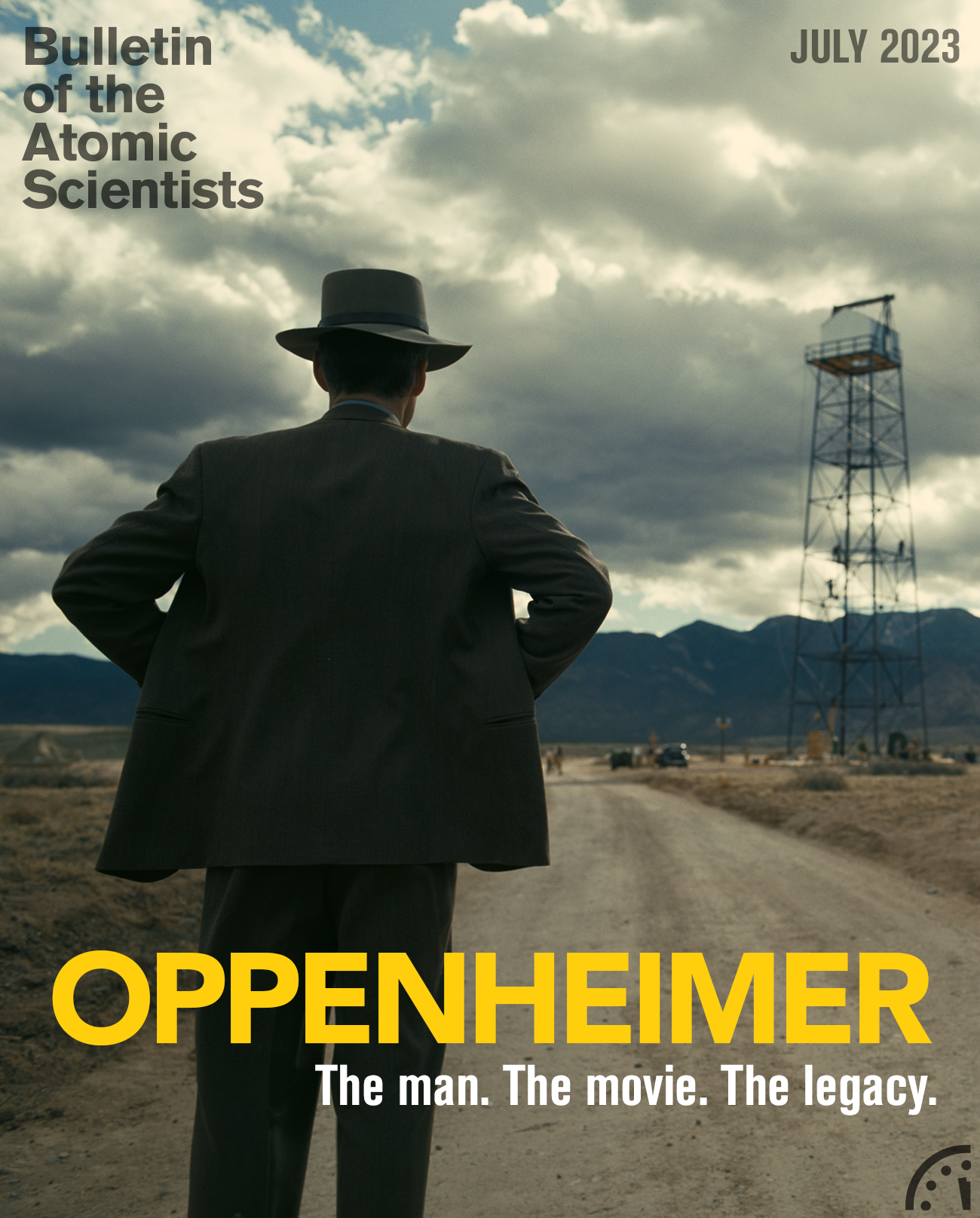
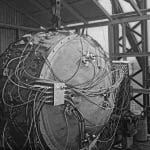
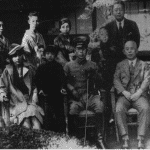
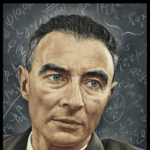

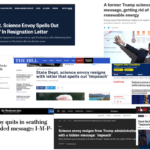





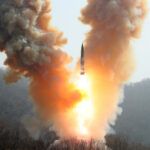









. . . . It was supposed to go into the highly nuanced and complicated issues surrounding the decision to drop the atomic bomb on Japan—you know, some generals, like Dwight D. Eisenhower, had criticized the use of the bomb as unnecessary, as the war was nearly won.
my belief is the bomb was dropped on Japan not to convince Japan to surrender but to send a signal to Soviet Union, that “we have this mighty weapon and are not afraid to use it.” of course 4 years later they had their own bomb.